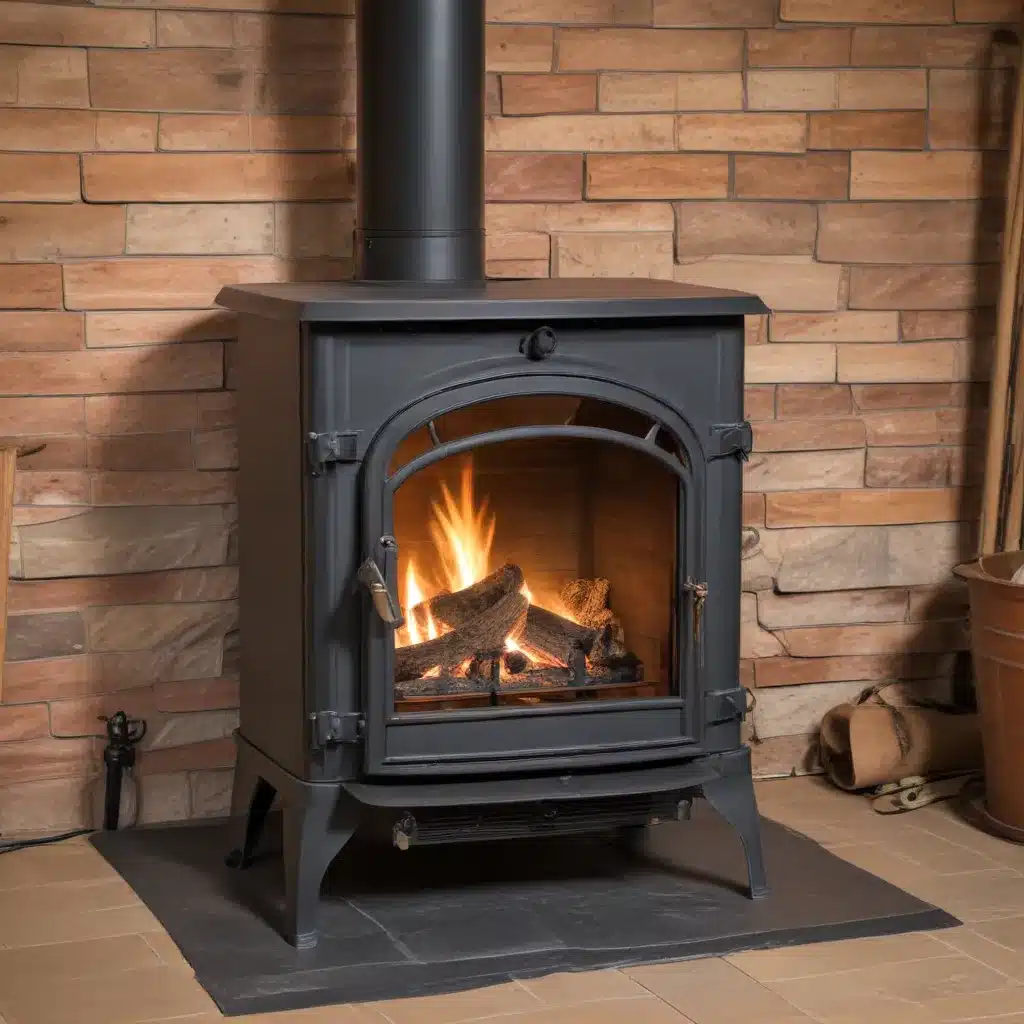
Understanding Creosote and Its Stages
Creosote is a byproduct of incomplete combustion when burning wood in a fireplace or wood stove. As the smoke from the fire travels up the chimney, the unburned particles and organic compounds condense on the chimney walls, forming this highly flammable substance. Identifying and addressing the different stages of creosote buildup is crucial for maintaining a safe and efficient wood heating system.
The three stages of creosote are as follows:
-
Stage One Creosote: This appears as a light, dusty soot coating on the chimney walls. While not immediately dangerous, stage one creosote can still restrict airflow and should be removed to prevent further buildup.
-
Stage Two Creosote: Characterized by thick, chunky tar-like flakes, stage two creosote significantly restricts airflow and can cause your wood stove or fireplace to smoke. Removing this stage requires more intensive cleaning methods, such as stiff-bristle brushes and specialized tools.
-
Stage Three Creosote: The most concerning stage, stage three creosote is a thick, sticky tar-like coating that is highly flammable, even at lower temperatures. This stage often requires professional intervention, including the use of chemical treatments or rotary chain whips to effectively remove the buildup.
Preventing Creosote Buildup
The key to minimizing creosote accumulation is ensuring complete combustion of the wood fuel. This can be achieved through a combination of burning properly seasoned wood and maintaining optimal air supply to the fire.
Burn Dry, Seasoned Wood
Moisture content is a significant factor in wood combustion. Wet or unseasoned wood leads to incomplete burning, resulting in more creosote-producing particles being carried up the chimney. Aim for wood with a moisture content between 15-20%, which can be verified using a digital moisture meter.
Maintain Proper Air Supply
Ensuring adequate air flow to the fire is essential for complete combustion. Install a fresh air intake system to provide a constant supply of oxygen, which will help maintain a hot, efficient burn and prevent creosote formation. Signs of an insufficient air supply include a lazy fire and soot buildup on the stove glass.
Burn Hotter Fires
The hotter the fire, the more complete the combustion, and the fewer creosote-forming particles that will reach the chimney. Strive to maintain a brisk, well-oxygenated fire to maximize heat output and minimize creosote buildup. Newer EPA-certified wood stoves are designed with features like secondary burn chambers and catalytic combustors to help achieve longer, hotter burns.
Install a Chimney Liner
Upgrading to a properly insulated stainless steel chimney liner can help maintain higher flue gas temperatures, reducing the likelihood of creosote condensation. The liner’s insulation helps keep the flue walls hot, preventing the smoke’s particles from adhering to the cooler surfaces.
Monitor Stove and Flue Temperatures
Investing in a stove top thermometer and/or a stove pipe probe thermometer will provide valuable insights into your wood stove’s performance. These tools can help you identify if the fire is burning hot enough to prevent creosote accumulation, allowing you to make adjustments as needed.
Maintaining and Cleaning the Chimney
Even with the best prevention methods, some creosote buildup is unavoidable when burning wood. Regular chimney inspections and cleanings are essential to maintaining a safe and efficient system.
Scheduled Chimney Inspections
Schedule annual inspections and cleanings before each heating season. This allows a professional to thoroughly examine the entire system, including the stovepipe, flue, and chimney, for any issues or excessive creosote buildup that needs to be addressed.
Chimney Cleaning Methods
For lighter, stage one creosote deposits, a basic chimney brush may be sufficient. However, for more stubborn, advanced stages of creosote, professional-grade tools and techniques are required, such as rotary power brushes, chemical treatments, or even full chimney relining.
Proper Ash Disposal
Regularly remove ashes from your wood stove and store them in a non-combustible container with a tight-fitting lid. Keeping the ash container away from any flammable materials is crucial to prevent accidental fires.
Prioritizing Safety
Creosote buildup poses a serious fire hazard, as the highly flammable substance can ignite at lower temperatures, leading to potentially devastating chimney fires. Proper maintenance and prevention are essential for protecting your home and loved ones.
Smoke and Carbon Monoxide Detectors
Equip your home with working smoke detectors and carbon monoxide alarms. These crucial safety devices can provide early warning of any issues, allowing you to address problems before they escalate.
Fire Extinguisher Accessibility
Keep a multipurpose fire extinguisher near your wood stove, within easy reach, in case of emergencies. Ensure that all household members know how to properly operate the extinguisher.
By following the tips outlined in this article, you can effectively prevent creosote buildup, maintain your wood stove’s chimney in top condition, and enjoy the warmth and ambiance of your wood-burning system safely and efficiently. For more information on wood stoves and heating solutions, visit our website at woodstoveheaters.com.
Recommended Wood Stove Models for Low Creosote
If you are still using an older, non-EPA-certified wood stove, consider upgrading to a newer model designed for improved efficiency and reduced creosote buildup. Some recommended options include:
| Model | Burn Time | Creosote Reduction |
|---|---|---|
| Napoleon NPS40-2C | Up to 10 hours | Catalytic combustion technology |
| Osburn 2400 | Up to 12 hours | Secondary air system |
| Timberwolf TW-3500 | Up to 8 hours | Air wash system |
These advanced wood stoves incorporate features like secondary burn chambers, catalytic combustors, and air wash systems to maximize combustion efficiency and minimize creosote production, helping to keep your chimney cleaner for longer.


